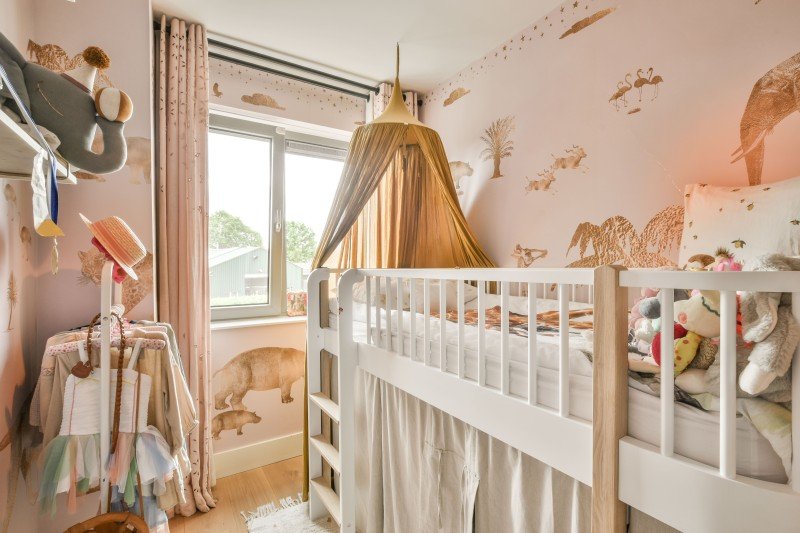Bunk Beds: A Simple Definition

Exploring Bunk Beds: A Comprehensive Guide
Bunk beds have actually long been a staple in children's bedrooms, dorms, and even homes with minimal space. Not just do they supply a useful sleeping service, but they also develop a fun and imaginative environment for kids and a great space-saver for adults and families. This post will explore whatever you require to understand about bunk beds, from types and materials to safety ideas and purchasing guidance.
Tabulation
- Kinds Of Bunk Beds
- Standard Bunk Beds
- Loft Beds
- Triple Bunk Beds
- L-Shaped Bunk Beds
- Product Options
- Wood
- Metal
- Security Considerations
- Purchasing Guide
- Frequently asked questions
Types of Bunk Beds
Bunk beds are available in different designs to match various requirements and choices. Here's a breakdown of the most typical types:
Conventional Bunk Beds
Standard bunks typically feature two beds stacked vertically on top of one another. These beds are ideal for brother or sisters sharing a room or for making the most of sleeping space in guest rooms.
Loft Beds
Loft beds stand likewise to conventional bunk beds but do not have a lower sleeping location. Rather, they typically incorporate a desk or seating area underneath, making them a great choice for small spaces requiring multifunctionality.
Triple Bunk Beds
Triple bunk beds are designed for three residents, with beds stacked in a three-tier setup. These are less typical but can be an enjoyable option for large families or sleepovers.
L-Shaped Bunk Beds
With one bed placed horizontally and the other vertically, L-shaped bunk beds are frequently geared up with extra functions such as desks or storage drawers and can match corner spaces in a space.
Comparison of Bunk Bed Types
| Bed Type | Suitable Use | Description |
|---|---|---|
| Conventional | Shared bedrooms or visitor rooms | Two beds stacked vertically |
| Loft | Little rooms needing multi-purpose space | Upper bed with open space beneath |
| Triple | Large families or sleepovers | Three beds stacked vertically |
| L-Shaped | Corner or flexible spaces | A mix of vertical and horizontal beds |
Material Options
Bunk beds are produced from various products, with wood and metal being the most typical. Each material has its pros and cons.
Wood
- Resilience: Generally robust and can hold up against years of use.
- Visual Appeal: Offers a classic look that can mix with numerous decorations.
- Weight Capacity: Typically tougher; can support heavier weights.
- Disadvantages: May be more costly than metal choices and can be vulnerable to scratches.
Metal
- Strength: Generally light-weight and simple to move however still durable.
- Modern Design: Often is available in smooth designs, making it appealing for modern areas.
- Affordable: Usually less costly than wooden alternatives.
- Disadvantages: Can be cold to the touch in winter seasons and might not have the very same aesthetic appeal for some purchasers.
Security Considerations
When it concerns bunk beds, security can not be overlooked. Here are key security tips to keep in mind:
- Guardrails: Ensure that the leading bunk has guardrails on both sides to avoid falls.
- Sturdy Construction: Check for a strong build and strong materials to withstand weight and movement.
- Weight Limit: Adhere to the maker's weight limit for both the upper and lower bunks.
- Ladder Design: Choose bunks with a safe, easy-to-climb ladder and avoid any sharp edges or rungs.
- Age Restrictions: Most manufacturers advise that children under the age of six should not sleep in the upper bunk.
Purchasing Guide
When searching for bunk beds, consider the list below aspects to find the best suitable for your requirements:
- Space Availability: Measure the room size and ceiling height, ensuring there is sufficient space for the top bunk.
- Bed Size: Decide in between twin, complete, or bigger sizes based upon your requirements and the size of the room.
- Design Preference: Consider the total decor of the bedroom to discover an ideal design.
- Alleviate of Setup: Look for a bunk bed that is straightforward to assemble.
- Budget plan: Bunk beds are available in different rate ranges, so identify a budget before starting your search.
FAQs
1. What is the recommended age for children to sleep on the top bunk?
Children aged six and older are generally recommended to sleep on the top bunk to reduce the threat of falls.
2. How can I make my bunk bed safer?
To improve security, make sure guardrails are correctly set up and check that the bed is positioned on a flat surface. Furthermore, encourage kids to utilize the ladder thoroughly.
3. Can I convert a bunk bed into two separate beds?
Numerous bunk beds are created to be convertible. Check click the up coming web site for convertibility features.
4. What devices are available for bunk beds?
Common accessories consist of bed linens, storage drawers, staircases instead of ladders, and tented canopies for an enjoyable visual appeal.
5. How do I keep my bunk bed?
Regular checks for loose screws or structural stability can help guarantee safety. Dust the bed frequently and tidy spills immediately to keep the products in good condition.
Bunk beds are flexible and a space-efficient option for different living circumstances, from kids's spaces to guest lodgings. With numerous styles and products offered, possible purchasers have a wealth of alternatives to consider, ensuring a combination of practicality and visual appeals. By prioritizing security and following the tips detailed in this guide, people can discover the right bunk bed that matches their space and way of life, all while developing a satisfying sleeping environment.

